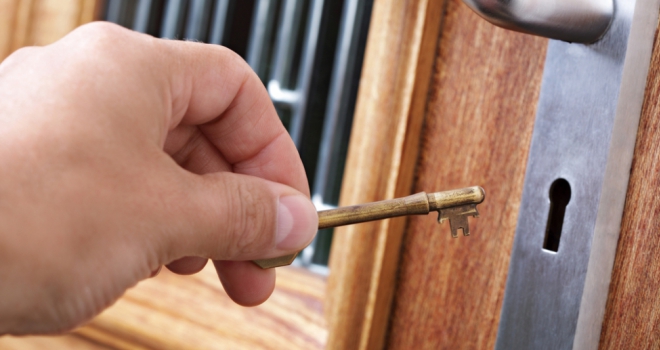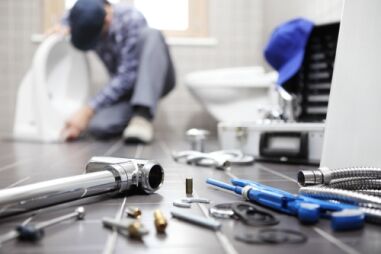This post further down involving 10 Common Rental Property Repairs is extremely fascinating. You should investigate for yourself.

Taking care of plumbing issues in rental properties effectively is important for maintaining occupant fulfillment and preserving the building's value. Whether you're a property manager or a residential or commercial property supervisor, knowing exactly how to address these typical troubles can save you money and time while making sure conformity with legal obligations. Below's a step-by-step guide on exactly how to take care of plumbing problems in rental buildings.
File Whatever
Keep in-depth documents of all reported pipes issues and the actions taken to solve them. Documents should include dates, summaries of the issue, communication with tenants, and invoices from service providers or plumbings. This details can be crucial for insurance claims, tax reductions, and lawful security.
Use Qualified Professionals
Always make use of certified and insured specialists for significant pipes repairs and installations. This guarantees that the job is up to code and can assist avoid responsibility problems in case of mishaps or additional damages. It additionally reassures tenants that repairs are being dealt with properly.
Establish Clear Communication
Urge occupants to report any pipes issues as soon as they happen. Give several communication channels such as phone, e-mail, or a lessee portal to make it simple for them to reach out. Trigger reactions to these reports can avoid small issues from rising right into significant troubles.
Enlighten Lessees
Inform your renters concerning what constitutes a plumbing emergency and what does not. Give standards on just how to manage small issues themselves, such as utilizing a bettor to unblock a commode. Likewise, inform them regarding what they ought to avoid taking down drains to avoid clogs, such as oil, coffee premises, and non-biodegradable things.
Routine Maintenance
Apply a routine maintenance routine for all plumbing systems in your service properties. Routine checks can help recognize and solve issues like leakages, slow drains pipes, or rusty pipes prior to they end up being serious. Take into consideration hiring a specialist plumbing technician to inspect the buildings yearly or semi-annually.
Quick Feedback to Emergencies
Have a strategy in place for reacting to pipes emergencies. This must include having the get in touch with details of reputable pipes services that supply 24/7 emergency repair services. Quick action is necessary to decrease damage in circumstances like ruptured pipelines or severe leaks.
Preventive Upgrades
Take into consideration upgrading older plumbing systems and components to extra modern, effective versions. This can reduce the frequency and intensity of pipes issues and lower lasting upkeep costs. It's also a selling factor for possible tenants who value upgrades and contemporary functions.
Lessee Move-Out Inspections
Conduct thorough plumbing checks during move-out assessments to ensure that any issues are determined and resolved prior to a new tenant moves in. This stops disagreements with brand-new tenants over pre-existing conditions and guarantees the property is in top condition.
Understand Legal Obligations
Recognize your lawful duties pertaining to pipes and basic property maintenance. Most jurisdictions require property owners to ensure their buildings are habitable which all pipes systems remain in good working order. Failure to deal with major issues quickly can result in legal actions from tenants.
Lessee Repayments
If a pipes problem needs immediate attention and the lessee settles the issue on their own, have a clear plan in position for compensating prices. Ensure lessees recognize they must acquire previous authorization for higher-cost repair services unless it's an absolute emergency situation.
Verdict
Handling pipes issues in rental properties calls for a positive strategy and good communication with lessees. By remaining on top of maintenance, reacting quickly to emergencies, and making use of competent specialists, landlords can keep their homes in superb condition and keep great partnerships with occupants.
How to Handle Water Damage in a Rental Property
What is Water Damage?
Water damage is harm or destruction caused by water entering areas where it is not supposed to be. It can be caused by a variety of sources and can manifest in different ways. The most common examples of water damage include:
- Leaking roof
- Plumbing leaks
- Appliance malfunctions
- Poor drainage
- Flooding
- Sewage backup
- Condensation
- Tenant negligence
- HVAC system issues
- Frozen pipes
Is water damage dangerous?
Water damage itself is not inherently dangerous, but it can lead to various hazards and health risks if not promptly and properly addressed. The severity of these risks depends on the extent of the water damage, the source of the water, and how quickly it is mitigated.
Some potential dangers associated with water damage include structural damage, mold and bacterial growth, electrical hazards, water contamination, and pest infestations. In situations where mold and mildew have gone unaddressed, mold can start to develop within 24-48 hours of water exposure, and this can impose a serious health risk to tenants. In particular, mold spores and damp conditions can lead to respiratory issues and even make existing health problems worse, such as allergies, asthma, or immune disorders.
Water Damage in an Apartment - Who is Responsible?
- If the water damage is caused by the tenant’s negligence, the tenant is responsible for the cost of repairs.
- If the water damage is caused by a defect in the property, the landlord is responsible for the cost of repairs.
- If the water damage is a result of natural causes, such as excessive rain, then the landlord is responsible, since the water intrusion likely occurred due to a defect in the property.
Landlord Responsibility water damage in rental property
Since maintaining habitability is the landlord’s legal responsibility, landlords are responsible for any resulting structural damage caused by water damage. These structural damages may include damage to walls, roofs, ceilings, and flooring. If water damage has affected the rental property’s original structure, the landlord is responsible for repairing or replacing those materials. Therefore, landlords should have property insurance that covers the structural components of their rental property so that they can receive help with the costs of covered events.
Preventative measures can also help landlords avoid massive renovations. Preventative maintenance may include conducting regular inspections to identify and address potential water damage before it becomes a major and urgent problem.
If a landlord fails to meet their responsibilities regarding water damage, it can lead to legal disputes and potential liability. Tenants who believe their landlord is not addressing water damage issues in accordance with California law can seek legal advice or contact local housing authorities for assistance.
https://www.goodlifemgmt.com/blog/water-damage-in-a-rental-property/

Do you enjoy reading about 10 Common Rental Property Repairs? Place a review further down. We would be happy to see your opinions about this posting. In hopes that you come back again before long. Are you aware of someone else who is truly interested in the subject? Feel free to promote it. Thank you so much for your time invested reading it.
Comments on “Landlord's Guide to Plumbing Maintenance in Rental Homes”